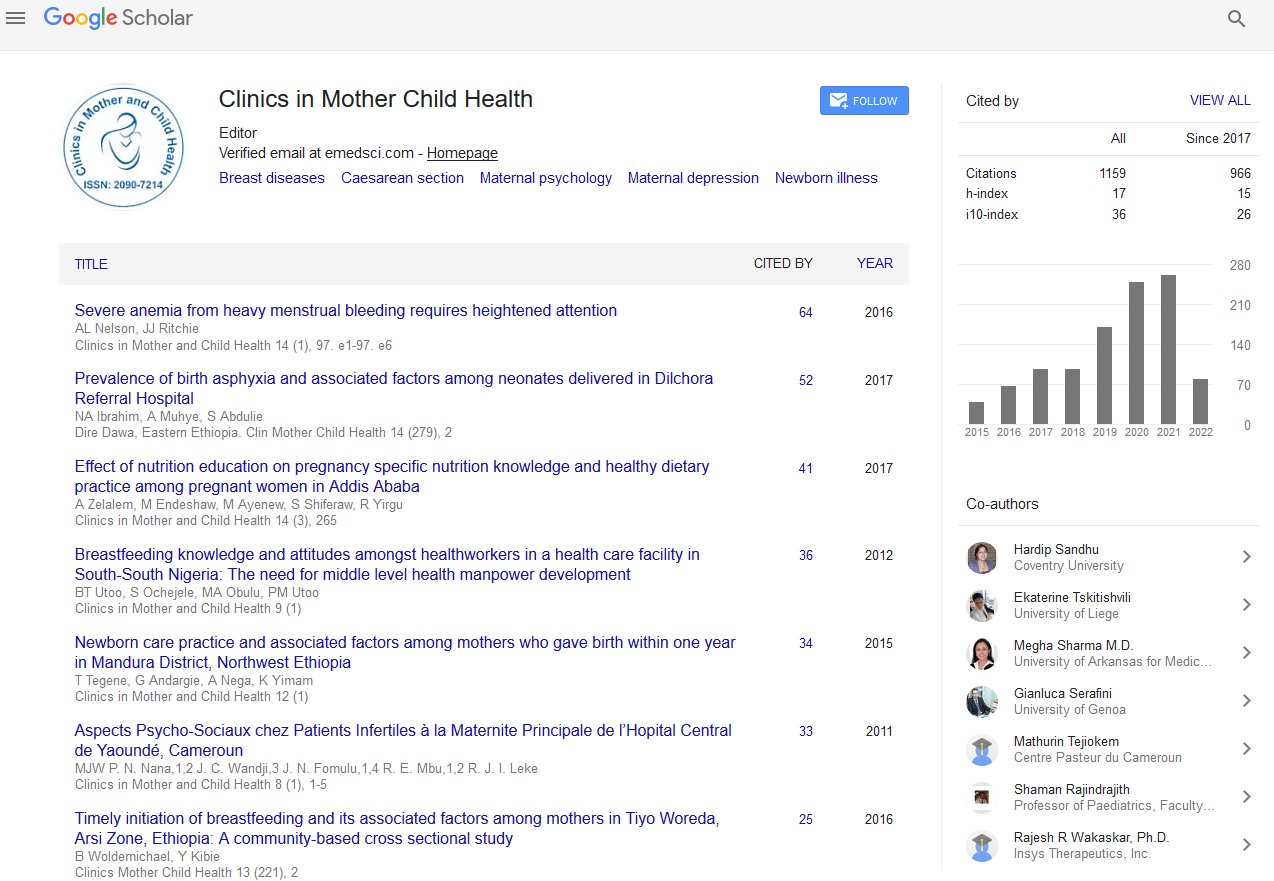Indexed In
- Genamics JournalSeek
- RefSeek
- Hamdard University
- EBSCO A-Z
- Publons
- Geneva Foundation for Medical Education and Research
- Euro Pub
- Google Scholar
Useful Links
Share This Page
Journal Flyer

Open Access Journals
- Agri and Aquaculture
- Biochemistry
- Bioinformatics & Systems Biology
- Business & Management
- Chemistry
- Clinical Sciences
- Engineering
- Food & Nutrition
- General Science
- Genetics & Molecular Biology
- Immunology & Microbiology
- Medical Sciences
- Neuroscience & Psychology
- Nursing & Health Care
- Pharmaceutical Sciences
Abstract
Prevalence of Traditional Medicine Use during Pregnancy, at Labour and for Postpartum Care in Rural Area in Zimbabwe
Tariro Mawozaa*, Charles Nhachi and Thulani Magwali
Objectives: The aim of this study is to determine the prevalence and types of traditional medicine used during pregnancy, at labour and for postpartum care by women in rural Zimbabwe.
Research design: A cross-sectional survey was conducted on 398 women from two rural districts in Zimbabwe. Data on socio-demography, pregnancy related information as well as traditional medicine use patterns was collected using a structured interviewer administered questionnaire. Convenient sampling was used to recruit women of childbearing age who were either pregnant at the time of the study, or had previously given birth.
Results: The prevalence of traditional medicine used during pregnancy and at labour was 69.9% and only 17.3% used these medicines for postpartum care. During pregnancy, 27.7% used soil from a mole hill, 21.6% used elephant dung, and 13.3% used Fadogia ancylantha. These medicines were mainly used to facilitate labour (43.5%), avoid tears/ stitches (19.7%), make delivery easy and safe (18.3%) and to avoid prolonged labour (5%). Only 9% of the participants however reported to have experienced adverse effects from using traditional medicines.
Conclusion: The use of traditional remedies in different forms during pregnancy and at labour was very common as confirmed by the high prevalence rate of 69.9%. Some of the women however used more than one type of traditional medicine during pregnancy, labour and for postpartum care. The exact effects of some of these medicines on both the mother and infant however, are not known, and there is therefore a need for them to be studied in greater detail.
Published Date: 2019-04-30; Received Date: 2019-03-05


